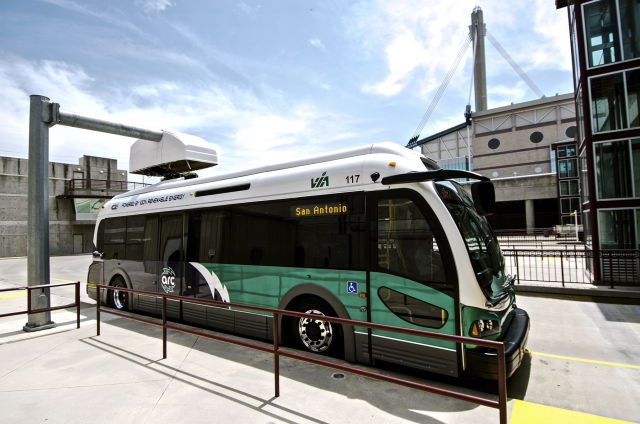
The old-fashioned method of providing electric power to large vehicles is to run electricity through rails on the ground or continuous networks of overhead lines, called pantographs, along fixed routes. That solution doesn’t require batteries because the connection with the power supply is constant as long as you never deviate from the route. Sweden is testing a pantograph electric highway for trucks. Until battery technology catches up, overhead wiring in a single truck lane along highways may be the best solution; possibly a hybrid with diesel motors or battery power when the truck leaves the throughway. But buses offer more opportunities for adopting electric power.
Many companies worldwide manufacture battery powered buses. As with cars, range, charging station locations, and charging times are the biggest challenges. U.S. EV bus manufacturer Proterra has developed a fast-charging system for electric buses that can get a bus back on the road in as little as ten minutes, according to Ars Technica.
The Proterra charging stations use a robotic arm that lowers down to connect to the top of the bus for charging. The stations can be most conveniently located at bus terminals or at fueling yards where diesel-powered buses go to refill. The comparison of charging to filling times is interesting, as charging is faster.
“The interesting thing is these diesel buses have such massive fuel tanks — given how inefficient they are — that it takes longer to completely refill an 80- or 120-gallon diesel bus system than it does to recharge our electric vehicles,” said Proterra CEO Ryan Popple. “So we’re actually getting to the point where the vehicles that are configured for fast charge can be replenished faster than you can stick a hose in the side of a diesel bus and fill it with fuel.”
Popple said the fast-charging system can provide enough charging in ten minutes for a bus with a 100kWh battery to travel about 30 miles. If it has a circular route measuring less than that distance, or a terminal turn-around at the other end of its route not more than 30 miles away (which will often be the case), using electric power could be more convenient as well cleaner for the environment than diesel buses.
Responding to customer questions about infrastructure compatibility and also to stay focused on its core business, which is building and selling buses, not charging stations, Proterra decided to open-source the patents so other companies could build and use the same fast-charging technology.



